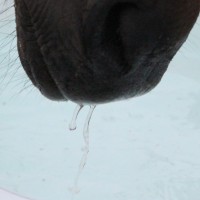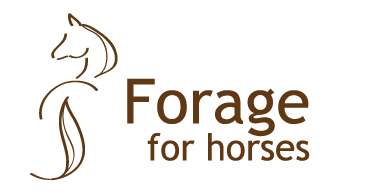The equine hindgut is a fluid reservoir

The hindgut of the horse also functions as a large fluid reservoir. This is possible because fibre binds water. Fibre has a high water-holding capacity and a high forage diet provides a lot of fibre for the horse and therefore also a larger fluid reservoir than low forage:high concentrate diets. High performing horses can have large fluid losses during intensive exercise and a high forage diet seems to be an advantage for the fluid balance of the horse.
Different types of fibre binds and releases water differently and therefore the type of forage, for example early or late harvested, may have an impact on the hindgut fluid reservoir. There seems to be a greater volume of fluid available in the equine hindgut when more soluble fibre is included in the diet. This is because soluble fibre ferments to a greater extent and as the fibre is being fermented the water that was bound to the fibre becomes available to be absorbed from the intestine and this is the equine hindgut serving as a fluid reservoir for the horse.
Forages’ capacity to bind water decreases during digestion since the fibre is fermented, but the ranking between different forages is the same before and after digestion; a study shows that grass had the highest water-holding capacity, in second place came beet pulp and then lucerne before a commercial fibre mix. The forage with the highest water-holding capacity also had the highest capacity to release water which makes it available for the horse.
Sara Muhonen, AgrD
Parsons AM, Nielsen BD, Schott HC, Geor R, Yokoyama M & Harris P. 2011. Effects of fiber type, particle size, and soak time on water hydration and estimated potential water releasing capacities of roughages fed to horses. Journal of Equine Veterinary Science 31, 261.
